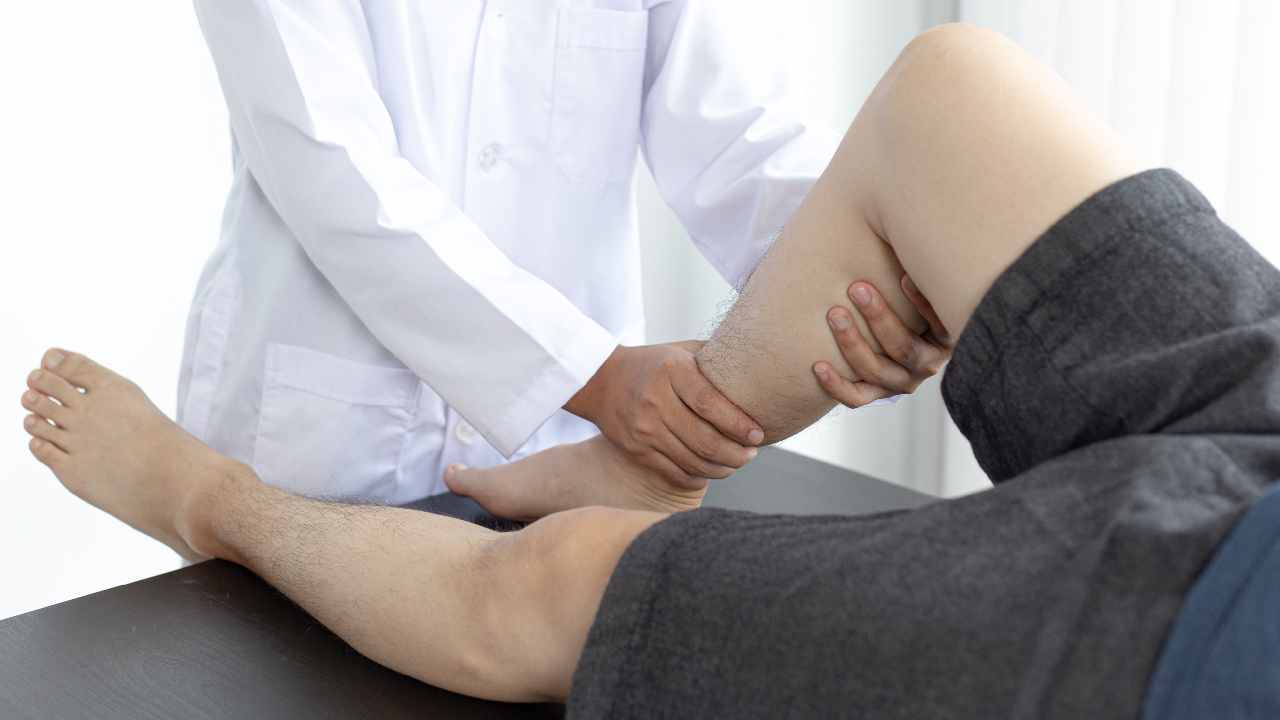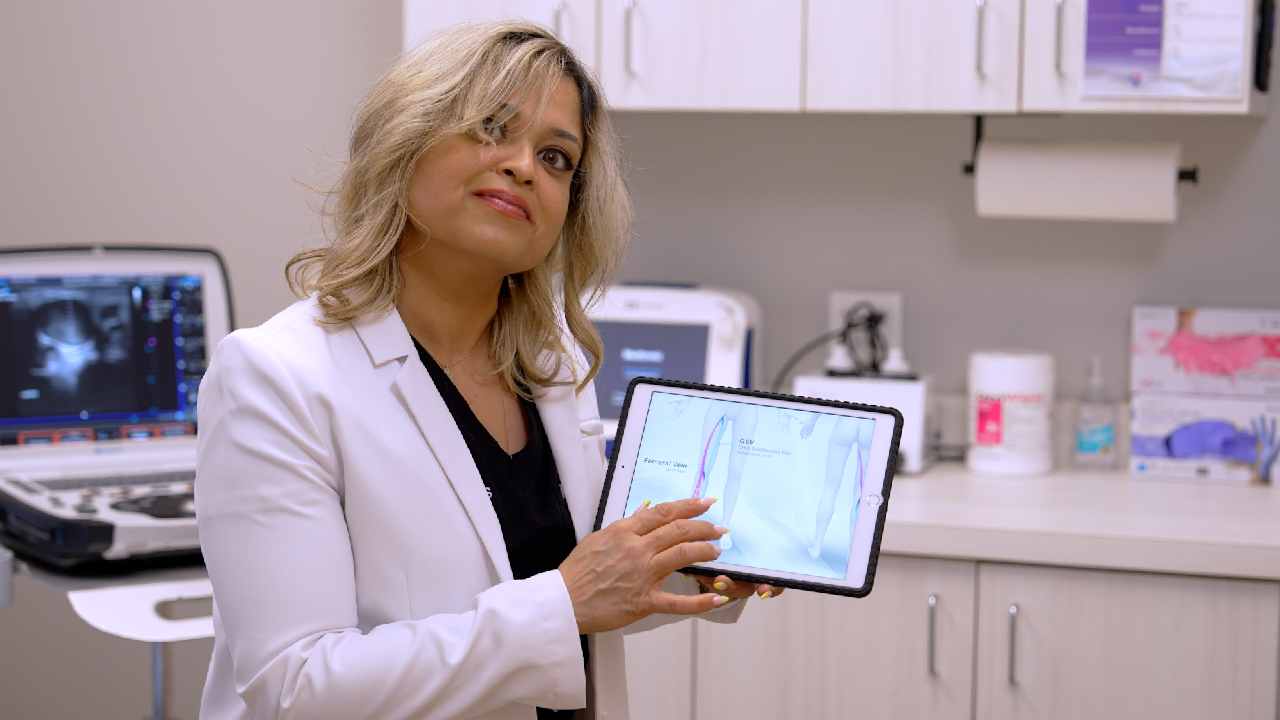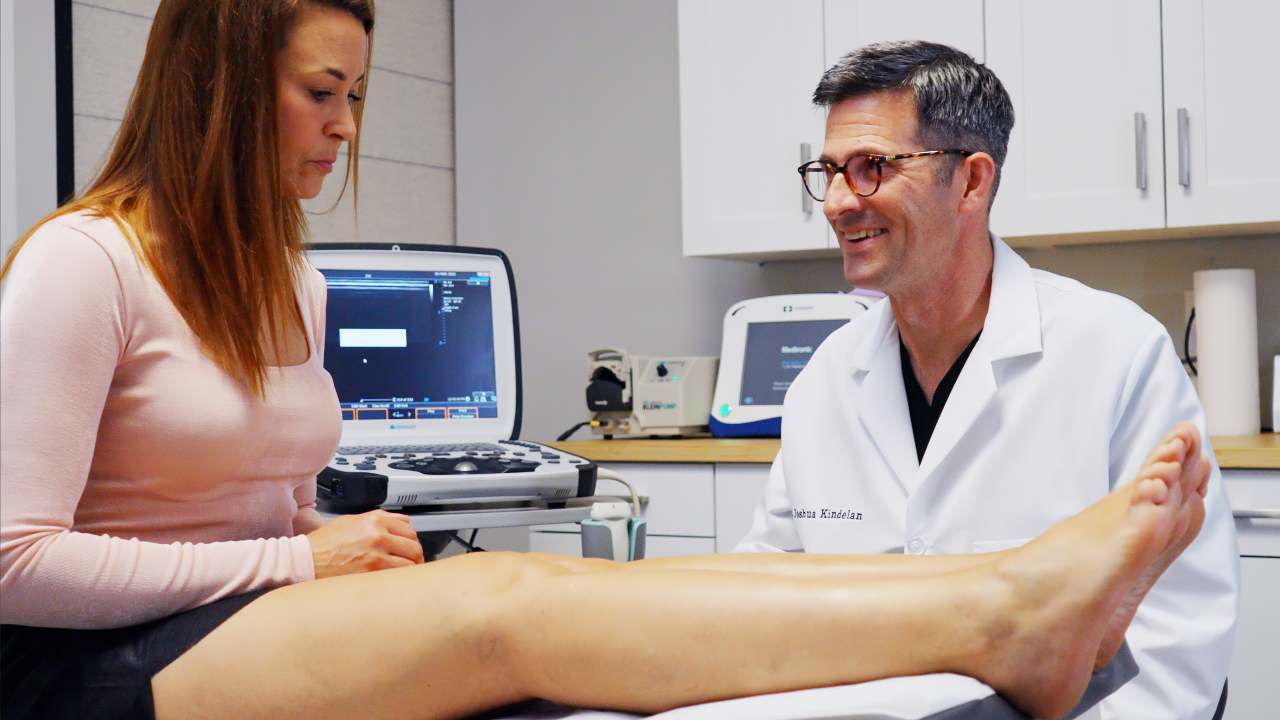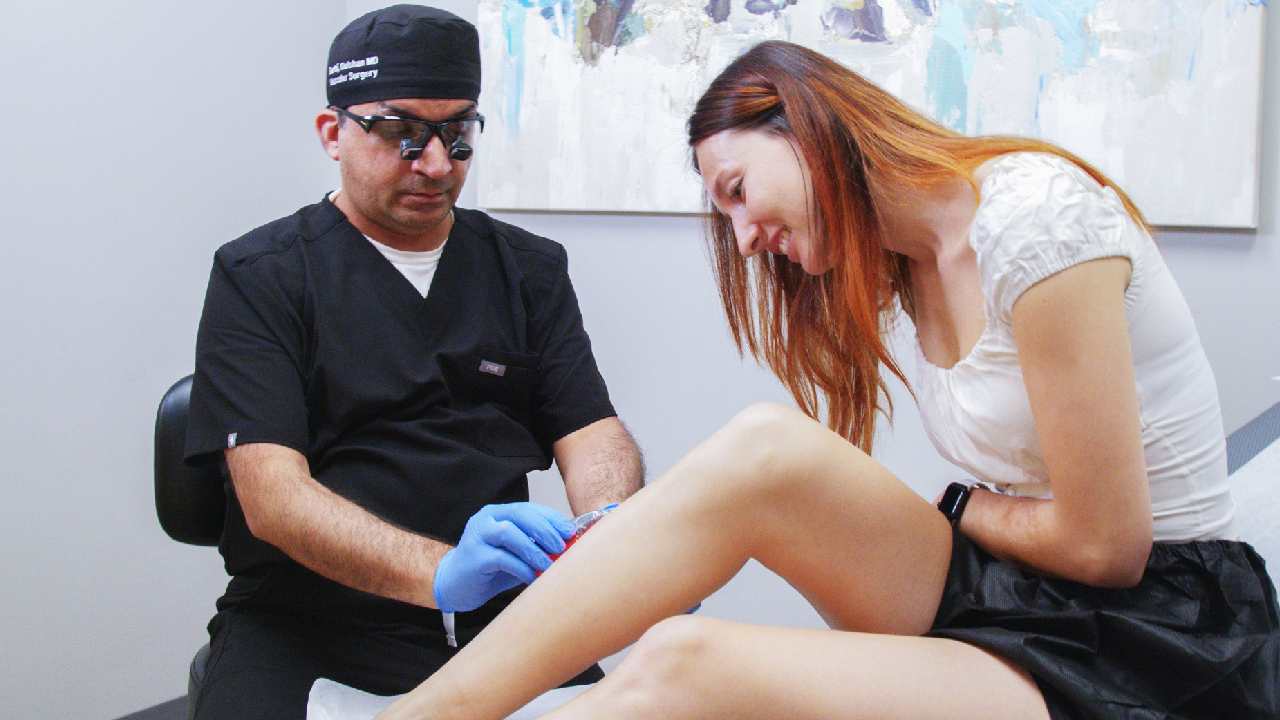
How to Check for Fibroids at Home? Signs and Tips
Uterine fibroids can be a source of discomfort and frustration. You might notice some unusual bloating or pelvic pressure, or perhaps your periods have become heavier and more irregular. Maybe you’re feeling constant fatigue or lower back pain, and you’re not sure what’s going on. These symptoms could point to uterine fibroids.
While the discomfort is evident, you might wonder, “How do I check for fibroids at home?” Understanding the signs and symptoms of fibroids can help you stay proactive about your health, but it’s important to note that a professional diagnosis through ultrasound or MRI is key to getting accurate information about your condition.
At Vein Treatment Clinic, we provide advanced diagnostic services, including ultrasounds, to help detect uterine fibroids. If you notice any of these symptoms, it’s a good idea to consult with a medical professional. In this article, we’ll explore the common symptoms of uterine fibroids and provide tips on how to check for fibroids at home.
Common Uterine Fibroid Symptoms
Uterine fibroids are noncancerous growths that can develop in the uterus. They can vary in size and number, and some may experience little to no symptoms. However, many individuals report several key signs that can indicate the presence of fibroids. If you’re experiencing any of the following symptoms, it could be worth checking in with your doctor for further evaluation.
1. Heavy or Irregular Menstrual Periods
One of the most common uterine fibroid symptoms is heavy or irregular periods. Women with uterine fibroids often report flooding or prolonged bleeding during menstruation. Periods might last longer than usual, or you may experience an unusually heavy flow that requires frequent changes of pads or tampons. Some women also report bleeding between periods, which can be indicative of fibroids. This is one of the most commonly reported signs of fibroids.
2. Pelvic Pain or Pressure
Another common symptom of uterine fibroids is pelvic pain or pressure. This may feel like a constant ache or discomfort in the lower abdomen or pelvic region. In some cases, fibroids can press on nearby organs, causing discomfort during sexual activity or when using the bathroom. The pain can range from mild to severe, and it may worsen during your period or with physical activity. If you experience consistent pelvic pain, it’s essential to keep track of when it occurs.
3. Frequent Urination
As fibroids grow, they may put pressure on your bladder, leading to frequent urination. You might feel the need to urinate more often than usual or have difficulty fully emptying your bladder. This symptom can be particularly noticeable at night, leading to disturbed sleep. If you’re finding yourself visiting the restroom more frequently than usual or waking up multiple times during the night, it may be time to consider the possibility of fibroids.
4. Lower Back Pain
Fibroids, especially larger ones, can put pressure on the lower back. This can result in chronic back pain, which may feel like a dull ache or sharp discomfort. It might also be accompanied by muscle spasms or stiffness in the lower back. If you experience unexplained lower back pain that seems to get worse over time, it’s worth considering uterine fibroids as a potential cause.
5. Abdominal Bloating
Uterine fibroids can also cause bloating or a feeling of fullness in the abdomen. As they grow, they can lead to noticeable swelling in the stomach area, which may resemble the feeling of being “bloated” after a large meal. If you notice your abdomen feeling unusually swollen or distended, uterine fibroids could be the cause. This symptom can sometimes be mistaken for other digestive issues, so it’s essential to monitor it closely.
How to Check for Fibroids at Home
While the best way to check for uterine fibroids is through a medical examination and ultrasound, there are a few signs you can pay attention to at home. Early detection can help you be more proactive in seeking treatment, but remember that only a healthcare professional can confirm the presence of fibroids and provide a proper diagnosis.
1. Monitor Your Menstrual Cycle
One of the first steps in checking for fibroids at home is to keep track of your menstrual cycle. If you notice your periods becoming heavier or longer, or if you experience spotting between periods, it’s a good idea to monitor these changes. Track the number of days your period lasts, how often you need to change pads or tampons, and whether your period feels heavier than usual. If these changes persist, it’s time to schedule a visit to your doctor for an evaluation.
2. Pay Attention to Abdominal Distension or Bloating
As mentioned earlier, bloating and abdominal swelling are common signs of fibroids. To check for this symptom at home, gently press on your abdomen to see if there’s any noticeable swelling or firmness, especially in the lower part of your belly. If you notice an increase in abdominal size or a sensation of fullness, it could be due to fibroids, particularly larger ones. Contact us to take the next step in investigating these symptoms.
3. Track Your Pelvic Pain
If you experience pelvic discomfort, take note of when it occurs and its severity. Keeping a journal can be helpful in recognizing patterns in your pain. For instance, does the pain worsen during menstruation or physical activity? Does it feel like pressure, cramping, or aching? While pelvic pain can have multiple causes, consistent discomfort might be linked to fibroids. If the pain becomes severe or persistent, it’s best to contact a professional for further evaluation.
4. Look for Signs of Pressure on Other Organs
As fibroids grow, they can put pressure on surrounding organs like the bladder, bowel, and kidneys. To check for symptoms at home, pay attention to any changes in your bathroom habits, such as needing to urinate more frequently, feeling like your bladder isn’t fully emptied, or experiencing constipation. These can be signs of fibroids pressing on your pelvic organs. If you notice any of these symptoms, it’s important to contact your healthcare provider.
How Are Uterine Fibroids Diagnosed?
While you can observe symptoms at home, the most reliable way to diagnose uterine fibroids is through a medical examination. At Vein Treatment Clinic, our expert team utilizes advanced diagnostic tools, such as ultrasounds, to accurately identify the presence of fibroids. If you suspect you have fibroids, we recommend seeking a professional diagnosis.
An ultrasound is a non-invasive imaging technique that can detect the size, number, and location of fibroids. In some cases, an MRI may be recommended for a more detailed view. Once fibroids are confirmed, your doctor will work with you to develop a personalized treatment plan, which could include minimally invasive procedures like uterine fibroid embolization.
If you’re concerned about the possibility of fibroids, don’t wait—contact us to schedule a consultation and explore your treatment options. Early detection can make all the difference in managing symptoms and improving your quality of life.
FEATURED POSTS BY VEIN DOCTORS














